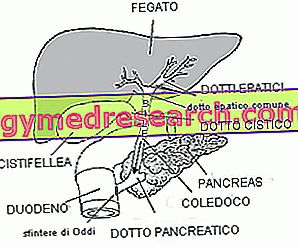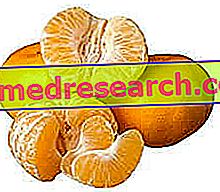Generality
What is alcohol?
Chemically speaking, ethyl is an alcohol "properly so called" with the linear formula CH 3 CH 2 OH. At room temperature it is colorless, partially volatile and with a characteristic odor; it boils at 70 ° C, therefore before water, but it is flammable already at 12 ° C. It is soluble in water and in certain solvents; he himself can effectively dilute some fats.

Nutrition and Nutrition
Alcohol in feeding
In the alimentary field, the term alcohol means the ethyl (or ethanol), which is the basis of the so-called alcoholic beverages, in variable percentages and estimated with the so-called alcoholic strength.

Alcohol in nutrition
In nutrition, alcohol is considered a " non-nutritious " with indirect caloric function. In fact, as we will see better later, despite being "designed" to metabolize it in small quantities, the human organism cannot use it directly for energy purposes. This is why all the ethanol taken with the drinks is converted by the liver into other molecules up to the acetyl coenzyme A, which can be oxidized for energy or converted into fatty acids to be stored inside the adipose tissue or in the liver itself.
By calculating the extent of "conversion to fat" and correcting it for the "energy cost of the process", ethanol provides 7 calories per gram .
Metabolic impact of alcohol and side effects
From the metabolic point of view, ethanol is considered an insulin-stimulant (therefore a hypoglycemic agent that promotes the increase of fat mass) and a powerful diuretic.
Taken in excess (compared to the ability to "dispose of it") in the short term, ethanol is a potentially toxic psychotropic nerve compound (it is unlikely to be fatal); taken in excess in the long term, it can trigger a very serious form of psycho-physical addiction and compromise health until death.
It is assumed that man has developed the enzymes necessary for the metabolism of ethyl alcohol to limit the poisoning caused by the intake of poorly preserved fruit and vegetables.
Methyl alcohol
Other types of alcohol are toxic even at very low concentrations and can be easily fatal. One of these is methanol or methyl alcohol; also called the spirit of wood, it can contaminate certain spirits badly distilled (for example grappa, due to the typical composition of the marc).
Insights on alcohol
Alcoholic content Alcohol and bodybuildingHealth Alcohol control Alcohol metabolism Alcohol test Alcohol and drugs Alcohol and pregnancy Ethyl alcohol in cosmetics Alcoholism: blood analysis MEOS Alcohol: damage from abuse and benefits Alcohol drink calories Alcohol canine Alcoholic alcohol Alcohol sportsAlcoholic degree
What is alcohol content?
The alcohol content is the percentage volume of alcohol contained in a given drink. A wine of 12 degrees will therefore have an alcohol content of 12 ml per 100 ml of product.
To know how many grams of alcohol this value corresponds to, it is sufficient to multiply it by the density of ethanol (0.79 g / cm3). Taking into consideration the wine of the previous example, we therefore obtain that in 100 ml of product there are 9.48 g of alcohol.
Since in our organism the oxidation of one gram of free ethanol 7 kcal, one liter of the wine in question will provide about 665 calories. It is therefore a respectable quantity, equivalent to the energy power of about 2 pounds of rice.
History
Alcohol consumption in human history
Alcohol consumption is very ancient, so much so that already the Old Testament, narrating the drunkenness of Noah (Genesis 9, 20-27), testifies to the deep-rooted bond between man and wine.
Widely represented also in Egyptian pictograms, the voluptuous consumption of alcoholic substances has slowly spread throughout the world, up to the present day, where the wide availability of liqueurs distilled with high alcohol content has significantly increased the incidence of alcoholism (or alcoholism, a term most commonly understood as a drug addiction to ethyl alcohol; it can also indicate the event of acute intoxication).
The damage related to alcohol abuse represents, today more than ever, a social problem of primary importance.
Alcoholic Calories
Calculate the Calories of an Alcoholic Beverage
Homemade Spirits
Homemade Limoncello - The Perfect Recipe
X Problems with video playback? Reload from YouTube Go to Video Page Go to Video Recipes Section Watch the video on youtubeSee all the recipes »



